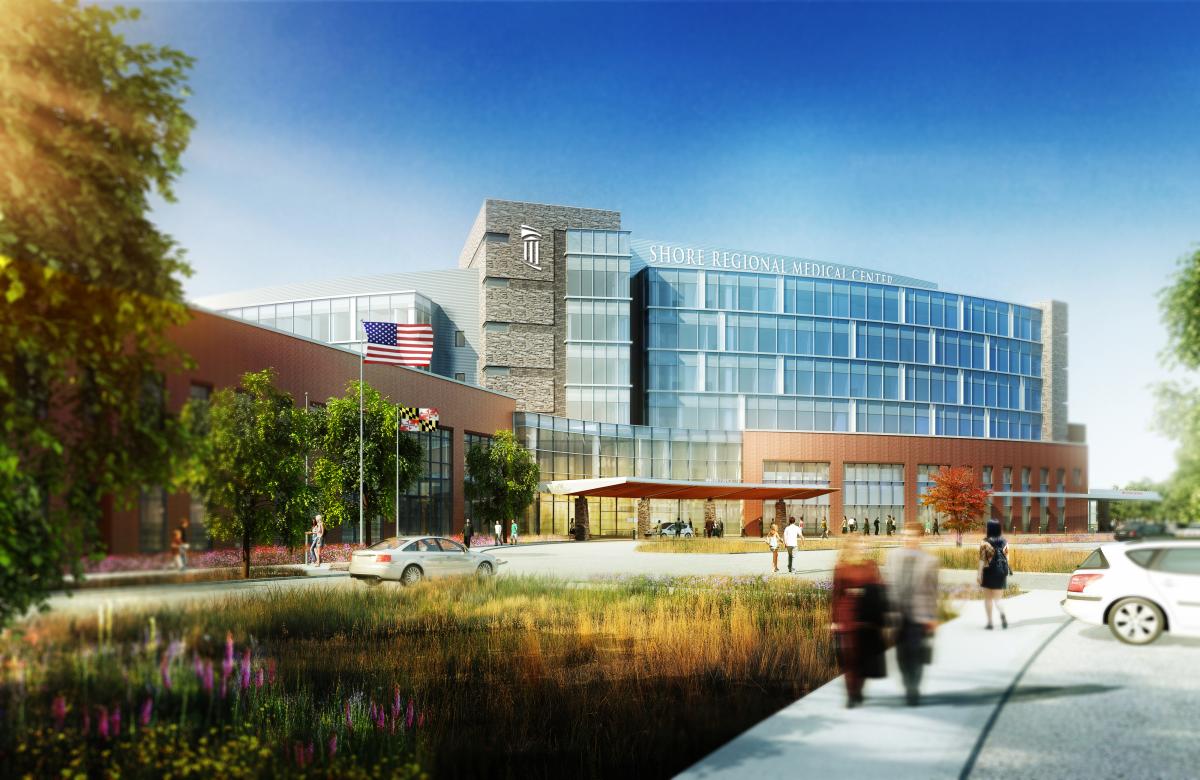Across the nation, many rural communities like ours face a crisis with access to health care. As a result, residents unfairly experience poorer health outcomes and a higher prevalence of premature death from common diseases like heart disease, cancer, lung disease and stroke.
Compounding this problem, rural hospitals are closing at an alarming rate. Almost a third—600—are in danger and more than 100 have closed their doors in the past decade, according to the Center for Healthcare Quality & Patient Reform.
Over the past decade, the University of Maryland Shore Regional Health has taken the fight for rural health care for our communities head-on.
Partnering with the University of Maryland Medical System (UMMS), known for advancing high quality, best-in-class health care, and the University of Maryland School of Medicine, UM Shore Regional Health is committed to transforming care for residents of the Mid-Shore communities we serve. We know that as rural Marylanders, you need access to health care and deserve the best our state has to offer.
That’s why we’ve been building an integrated health system tailored to meet the needs of Caroline, Dorchester, Kent, Queen Anne’s, and Talbot counties. Medical centers in Cambridge, Chestertown, Denton, Easton, and Queenstown provide a robust regional network of localized care for our 170,000 residents spread over 2,000 square miles. But we must do more.
UMMS provides high-quality acute care across Maryland. But we believe that Eastern Shore residents should not have to travel across the Bay Bridge to get most of the care they need. It’s time to advance their care and combine and align it with all other health care services, right here on the Eastern Shore.
To answer patient demands, our vision includes a state-of-the-art $550 million Regional Medical Center in Easton to serve residents and visitors across the region. This centralized medical facility will provide top-flight treatment and technology and support our expertly trained providers who treat acute health crises such as severe injury or sudden illness, emergent medical conditions from disease or trauma and provide surgical care.
This modern acute care hospital is the last piece of the puzzle to connect our region and patients to a full “continuum of care” throughout their lives. The new Regional Medical Center will be the hub of acute care for the region with spokes around the Mid-Shore counties that have independent services and features that are unique to those communities.
A full lifespan of care will start with prenatal and OB/GYN care and include pediatrics, family, general and internal medicine, preventive care, hospital and ambulatory care, acute and outpatient care, rehab, elder, and end-of-life care. It includes fighting top killers such as heart disease, cancer, stroke, chronic respiratory disease and diabetes.
The Regional Medical Center also:
- Completes our vision to connect and combine localized regional care into one comprehensive system for patients.
- Transforms the patient’s experience through progressive medical technology and care, from private rooms to advanced patient monitoring technology in every room and access to multiple specialists and treatments.
- Helps attract and retain top medical talent in the competitive national market.
The Regional Medical Center project is the top capital priority for UMMS, and passion for this project is widespread and growing. Notable initial investments so far by the state of Maryland and philanthropic partners demonstrate how it’s truly a public-private partnership, backing taxpayer dollars with donors committed to the cause.
Governor Wes Moore—who has made healthcare a top priority—is backing it. So has the Maryland Assembly’s Eastern Shore delegation, which deserves great credit for the legislature’s approval of the governor’s initial $10 million fiscal year 2024 commitment. In FY 2025, $20 million in funding is also planned in the state budget.
Both public and private support depends on the Eastern Shore community voicing support for better health care. This is also the proverbial “paying it forward.” As we join to build a model rural health care system that other regions around the country can emulate, we can help bring better care to everyone.
Ken Kozel is the president and CEO of University of Maryland Shore Regional Health.



Sian Salsbury says
Access to healthcare is a critical need on the Eastern Shore. In the Northern Eastern Shore we rely on Christiana Care for most healthcare but it takes months to get in for routine doctor appointments. Specialists are the same way. As a resident of Galena, Middletown is the closest center for resources but it still takes months to get in to see someone. If you are a new patient it can take up to 2 years for a physical intake appointment. Medicare Advantage plans are not available around here either unless you happen to have access through past employment or a union. I’ve had to use my out of state union Medicare plan to get insurance. I now work full time so I have insurance through my employer but finding accessible timely care has been a nightmare.
I want to know what Andy Harris is doing to advocate for his constituents on the topic of access to healthcare. All I’ve ever heard from him I s him is a desire to cut Medicare and certainly nothing about getting more facilities available. We need support in Washington to solve our problems. Thankfully our governor has our back.
Holden Rogers says
I have not lived in Chestertown for some time, I an sad to say, but what I read suggests that the U. of M. Medical System, in general, has changed its position such that it is on the side of the Eastern Shore’s communities. I am recalling that a decade ago it didn’t seem that way, and I recall too that I have experienced the dynamics of the wool over the eyes too, too often, but this article seems to make absolute sense. Ben Franklin said it, “…we must all hang together… or we’ll hang separately.” The article was a constructive read. Thanks.